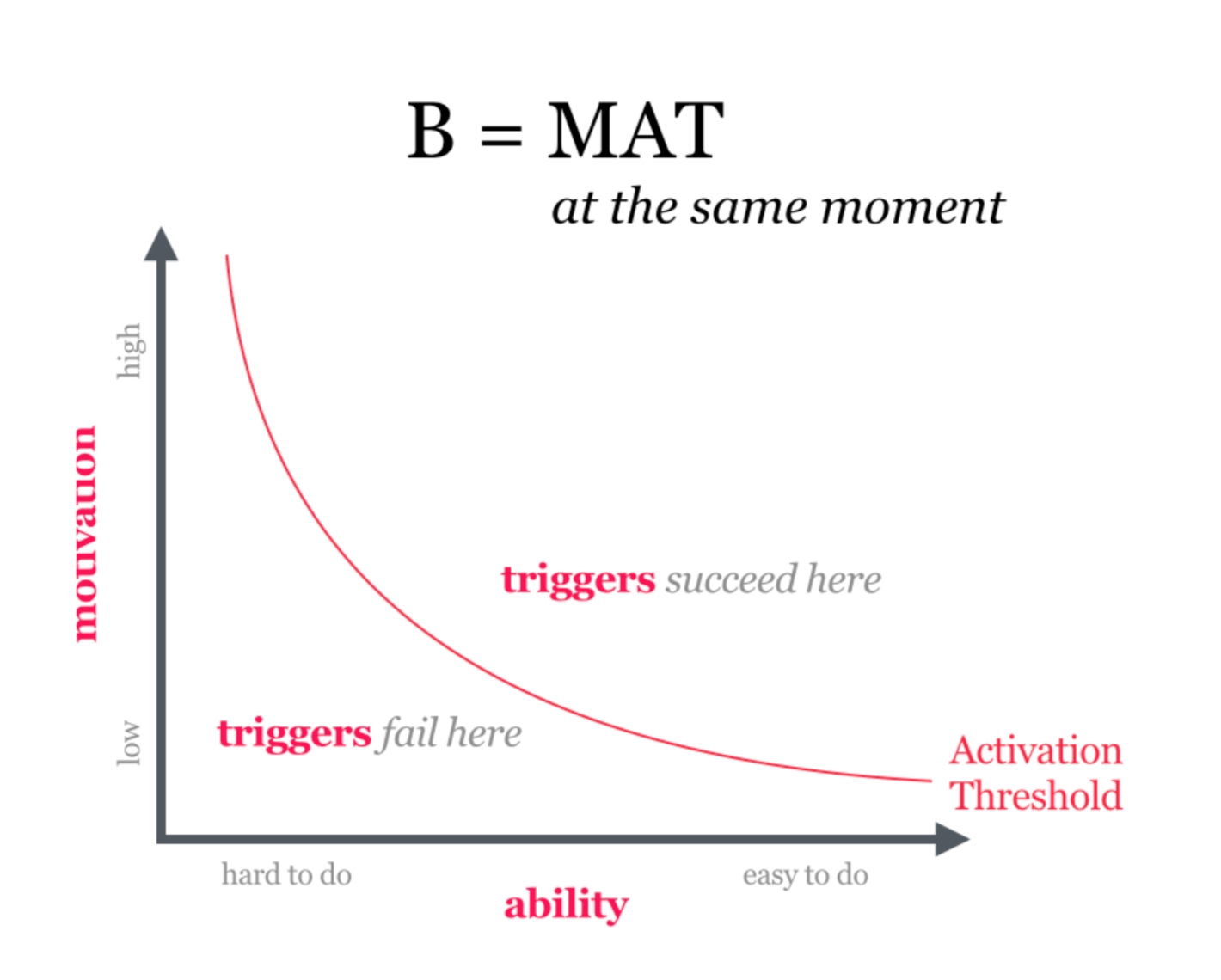BJ-Fogg Model
BJ-Fogg
BJ Fogg Model
Introduction
To find out what motivates users to take action, I conducted a literature study about user behaviour. The literature study describes the BJ Fogg model which explains how users react in certain situations and how to solve problems or prevent them.
The model
According to the BJ Fogg model, the best way to hook users is to influence user behaviour and create habits. The model explains how users behaviour is influenced by three main aspects. Motivations, ability and triggers which can be written in the following format: Behaviour = Motivation x Ability x Trigger. When a desired behaviour does not appear, at least one of these three is missing.
The model is very easy to implement because anytime you want better understanding how behaviour is determined, all that is needed is to answer three simple questions what u is lacking for behaviour to happen:

Is someone motivated enough?
Is someone capable of performing the desired behaviour?
Did we remind/ask them to perform the desired behaviour?
I will elaborate on the three elements of the model in the next section.
Trigger
A trigger is a call to action that causes someone to perform a certain behaviour. It should noticeable and activate the receiver. In other words, triggers should be easy to spot and tell instantly what to do (perform). Important to remember is that is, if you want to change behaviour, you need to trigger that behaviour. If the trigger is missing, someone can be very motivated and have the ability to perform, but there’s simply no call for action. As BJ Fogg says, it is our job as a designer to “to put hot triggers in the path of motivated people.”
Motivation
There are a lot theories about motivation, in general they explain how motivation is to answer to change attitude which in the end leads to behaviour change. But in practice, it works the other way around. People tend to change their attitude to be consistent with performed behaviour. Thus, in order to change attitude you need to trigger a certain behaviour. As the BJ Fogg model shows, it is not about attitude but about behaviour. People can be highly or low motivated. The key indicator to keep in mind is the following: “when motivation is high, you can get people to do hard things. But once motivation drops then people will only do easy things.” (Groenewegen, 2018) BJ Fogg notes to always start with making the desired behaviour easier instead of starting at motivation. Our brains just prefer simplicity.
Ability
A person's ability is essential to perform a certain behaviour. If you want to increase ability there are two ways to do so. One is to improve a persons know how by training them to add more ability to do the target behaviour, but this is often the hard way. A better solution to the problem is to make the target behaviour easier to do. Within the model, one could say that ability is equal to simplicity. When focusing on the simplicity of the target behaviour, ability increases. BJ Fogg determined this in the six following factors:
Time
Money
Physical Effort
Brain Cycles (A performance that requires a lot of thinking, simply becomes hard to fulfill)
Social deviance (Breaking the rules can be a barrier to perform)
Non-routine (If behaviour is out of the persons ‘habit’ it simply becomes more
difficult to perform, because if not they are able to use their ‘autopilot’)
Conclusion
All information given, when designing the Employee Benefit Program I need to take these theories into account. As my design challenge says that the configure process needs to be as simple and in as little steps as possible.
Last updated
Was this helpful?